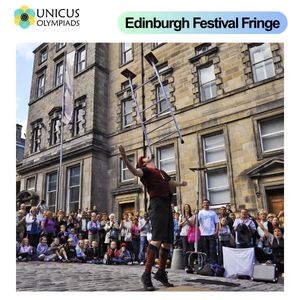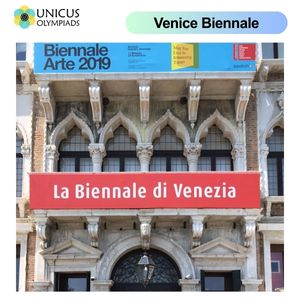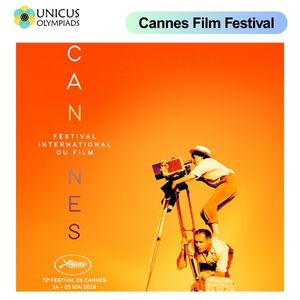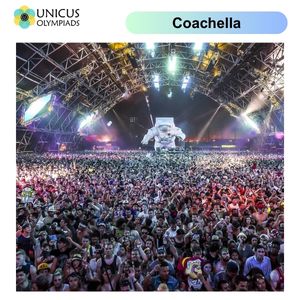

Art and culture festivals around the world celebrate the richness of human creativity, showcasing a diverse range of performances, exhibitions, and cultural expressions. These festivals not only highlight the work of individual artists but also serve as platforms for cultural exchange, fostering a deeper understanding of the world's diverse traditions and contemporary art. From visual arts to music, theatre, literature, and film, these festivals provide audiences with unique experiences that broaden their horizons and enrich cultural dialogue. This article explores some of the major art and culture festivals worldwide, examining their history, significance, and impact on global culture.
The Edinburgh Festival Fringe, often referred to simply as the Fringe, is the largest arts festival in the world. It takes place every August in Edinburgh, Scotland, and is a celebration of theatre, comedy, music, dance, and various other performing arts. The festival was established in 1947 as an alternative to the official Edinburgh International Festival, and it has since grown into a massive global event that attracts thousands of performers and visitors every year.

The Fringe started in 1947 when eight theatre groups were unable to participate in the newly formed Edinburgh International Festival and decided to perform on the fringes of the main event. Today, the festival features thousands of performances in venues across the city, including theatres, streets, and even outdoor spaces. It provides a platform for both emerging and established artists to showcase their work.
The Fringe has played a major role in shaping contemporary performing arts and is renowned for pushing the boundaries of theatre and performance. Its open-access nature allows anyone with a performance to participate, making it a unique and democratic space for artistic expression.
The Venice Biennale, established in 1895, is one of the oldest and most prestigious cultural events in the world. Held every two years in Venice, Italy, the Biennale is a major international exhibition of contemporary art, featuring works from artists around the globe. It encompasses various art forms, including visual arts, theatre, dance, music, and cinema, and it plays a key role in shaping global trends in contemporary art.

The Venice Biennale was originally created as an international exhibition of fine art, but over time, it has expanded to include different art forms, such as architecture, cinema, and dance. Each biennale is organized around a central theme, with national pavilions representing different countries. The event attracts artists, curators, critics, and art lovers from all over the world.
The Venice Biennale is a major event in the global art calendar and serves as a platform for emerging artists to gain international recognition. It fosters cross-cultural dialogue, allowing artists from diverse backgrounds to present their work in a shared space, making it an important cultural exchange. The event also influences the art market and provides a space for artists to experiment with new ideas and engage with the political and social issues of their time.
Established in 1946, the Cannes Film Festival is one of the most prestigious and well-known film festivals in the world. Held annually in Cannes, France, the festival is known for its exclusive red carpet events, glamorous atmosphere, and focus on artistic and innovative filmmaking. The festival showcases a range of films, including feature films, documentaries, short films, and student films, and it provides a platform for emerging filmmakers and global cinema.

The Cannes Film Festival was created to promote the development of the film industry and to provide a space for films that showcased the highest artistic quality. Over the years, the festival has become synonymous with prestige, attracting filmmakers, actors, and industry professionals from all over the world. The Palme d'Or, awarded to the best film, is one of the most coveted prizes in cinema.
Cannes has played a pivotal role in shaping global cinema by giving visibility to international filmmakers and highlighting films that challenge conventional narratives and cinematic techniques. The festival has been instrumental in promoting social and political issues through film, often featuring films that address important global concerns such as inequality, war, and human rights.
Coachella, held annually in Indio, California, is one of the most famous music and arts festivals in the world. It brings together music, art, and culture, showcasing top performers from a wide range of genres and featuring contemporary art installations. Since its inception in 1999, Coachella has become an iconic event for music lovers and artists alike.

What began as a small festival focused on alternative music and counterculture has now become a massive, multi-day event that attracts tens of thousands of visitors every year. Coachella’s popularity grew rapidly in the 2000s, with major headliners such as Beyoncé, Radiohead, and Kendrick Lamar performing in front of vast crowds. In addition to its music performances, Coachella features large-scale art installations, interactive exhibits, and fashion displays, blending multiple cultural experiences.
Coachella’s influence extends beyond music, shaping fashion, art, and even social movements. The festival has become a hub for creative expression, where art installations, multimedia performances, and unique fashion trends are on full display. It has also provided a platform for new artists to gain exposure, helping to launch the careers of performers like Lady Gaga, Billie Eilish, and many others.